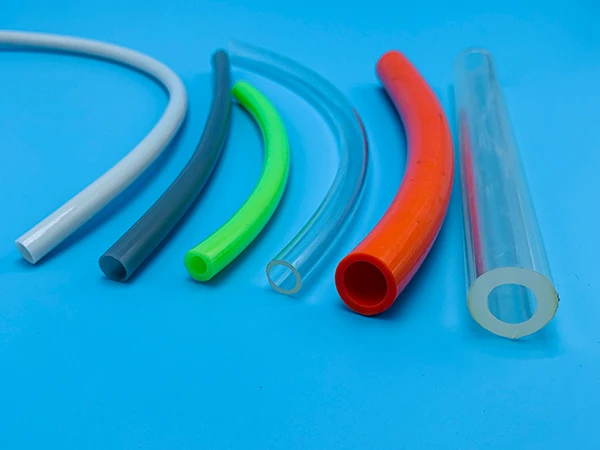PU plastic is a polymer material synthesized by the reaction of isocyanate and polyol. Its unique chemical structure gives it a variety of properties and is widely used in industry, life and technology.
Classification
1.Thermoplastic polyurethane (TPU)
It has the characteristics of elasticity, wear resistance, oil resistance, etc. It can be reshaped by heating and is often used in shoes, mobile phone cases, auto parts, etc.
2.Thermosetting polyurethane
It cannot be melted after curing, is resistant to high temperatures and has high mechanical strength. It is used in coatings, adhesives, foam plastics, etc.
3.Foam polyurethane
Soft foam: such as sofa cushions, mattresses, sound-absorbing materials.
Hard foam: used for building insulation layer, refrigerator insulation layer.
Characteristics and advantages
Elasticity and wear resistance: similar to rubber, but with higher strength, suitable for manufacturing tires, conveyor belts, etc.
Chemical resistance: Resistant to erosion by oil, solvents and some acids and alkalis.
Insulation and sound insulation: The closed-cell structure foam has excellent insulation performance.
Adjustable performance: adjust the hardness, transparency or temperature resistance through the formula.
Environmental protection: some PU can be biodegraded or recycled.

Application areas
Industry: seals, bearings, industrial wheels, pipe linings.
Automobile: seat foam, dashboard, bumper, shock-absorbing components.
Construction: insulation board, waterproof coating, elastic floor.
Daily necessities: sports shoe soles, artificial leather, furniture coating.
Medical: artificial heart valves, medical catheters
Processing technology
Injection molding: used for TPU products such as gears and mobile phone cases.
Foaming molding: production of soft/hard foam, the foaming agent and temperature need to be controlled.
Casting molding: manufacturing large parts such as car interiors.
Spraying/coating: used for waterproof coating or furniture surface treatment.
Limitations
Poor high temperature resistance: long-term use temperature usually does not exceed 80~120℃
Ultraviolet sensitivity: long-term exposure to the sun can easily turn yellow and brittle, and anti-UV additives need to be added.
Hydrolysis problem: some PUs are easy to degrade in humid environments, so hydrolysis-resistant models need to be selected.
Environmental protection and safety
Raw material toxicity: isocyanates are used in production, and inhalation protection is required.
Recycling technology: physical recycling or chemical recycling.
Alternative applications: water-based PU coatings reduce VOC emissions and are more environmentally friendly.
Contact us
If you would like to find out more about PU or to purchase PU, Please contact us for pricing and conditions. We can provide detailed information and tailor a solution to your needs.
EMAIL:market@weitengroup.com
MOBILE:86-18561739639
WHATSAPP:86-18561739639